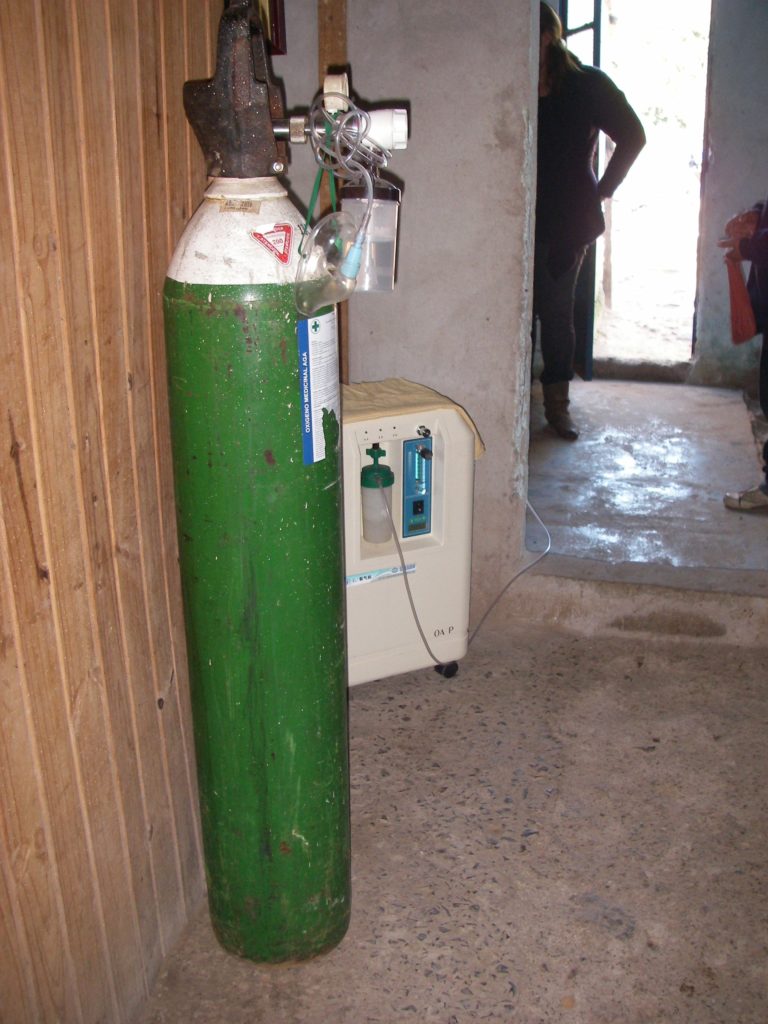Breathing through oxygen technology in Uruguay and South Africa (Wainwright, 2018)
Life of Breath collaborator Dr. Megan Wainwright introduces her new paper “Exploring ambivalent human-oxygen technology-world relations through the lens of Postphenomenlogy” published in the Journal of Material Culture as part of a special issue on Ambivalent Objects in Global Health (Eds. Tom Widger and Andrew Russell).
It is through our breath that our bodies receive the oxygen they require to function. A person severely affected by emphysema may be capable of drawing-in breath (albeit with difficulty), but the alveoli in the lungs might eventually become too damaged to enable the gas exchange that oxygenates our blood. When this occurs, someone could become chronically short of oxygen. Tell-tale signs are blue lips and extremities, and clubbed nails. If a person is discovered to have chronic low levels of oxygen in the blood, they may require a permanent supply of oxygen to use at home to stave off the effects low oxygen has on the internal organs, especially heart failure. This involves bringing an oxygen-delivery device into the home and using it 15-24 hours a day. To the best of our knowledge, the biggest cause of damage to the alveoli that causes chronic low oxygen levels is the inhalation of tobacco smoke.
My PhD thesis in medical anthropology was about living with COPD in Uruguay. In that study, through comparing rural and urban and private and public, the issue of access to home oxygen therapy emerged as an area of need of further investigation. In 2015, thanks to the National Research Foundation of South Africa, I was able to dedicate 2 years to this topic while a Postdoctoral fellow in the Division of Social and Behavioural Sciences at the University of Cape Town. The study was entitled “Using, providing and producing home oxygen therapy” and was a comparative ethnography of home oxygen in Cape Town, South Africa, and Montevideo, Uruguay. I began by going back to my PhD fieldnotes and interviews, looking specifically at the material I had for participants in that study who had been using home oxygen therapy. My participation in a panel on ambiguous objects in global health at the MAGic conference in Sussex, led me to search-out new theories that would help me to refocus my attention on the materiality of oxygen. In this I found philosopher Don Ihde’s conceptualization of postphenomenology – a pragmatic philosophical approach to studying human-technology-world relations. I applied postphenomenology, including its toolbox of concepts, as a lens through which to explore the question: how do people and their oxygen technologies relate? In undertaking the new study, the lens helped me to not loose sight of the technological variations I was observing and their impact on the people who interacted with them – users, health professionals, oxygen company staff, and decision-makers. In the paper I highlight three ‘ways of relating’ to home oxygen technology – as limiting enablers, an markers of illness and measures of recovery, and as precious and limited resources. Under each theme I draw-out how the material variations shaped experience. In the end I draw the reader’s attention to the political-economy of oxygen dependency, arguing that finances are the great mediator of hypoxic peoples’ experience of their worlds.

The cost of oxygen in its multiple forms is a challenge for individuals, health systems, providers and governments. In both cities where my fieldwork was undertaken hospitalised patients had access to oxygen, and though highly regulated, patients reaching specialist care who were hypoxic could generally access state or health insurance-funded home oxygen therapy. I know from interviews with health professionals from other African countries that in their home countries there is sometimes barely a reliable supply of oxygen in hospitals, let alone the resources for home oxygen therapy. In the article I point to the ambiguity of privatised and commodified oxygen and raise the issue of prices and profits. However, having just returned from COP8 in Geneva of the Framework Convention on Tobacco Control with Andrew Russell, I am thinking about tobacco industry’s responsibility for producing and marketing products that strip the body of its capacity to fulfil its natural function (exchanging gases like oxygen between the blood and the breath). Perhaps the global health community needs to consider whether the tobacco industry should be held liable for the financial brunt of home oxygen therapy in order to improve global access. This new publication will help illustrate the complexities of this global medical technology.
Readers who do not have access to the journal can find the ‘accepted manuscript’ here (link). Thanks to the National Research Foundation of South Africa, the article has also been translated into Spanish and is available here (link).



